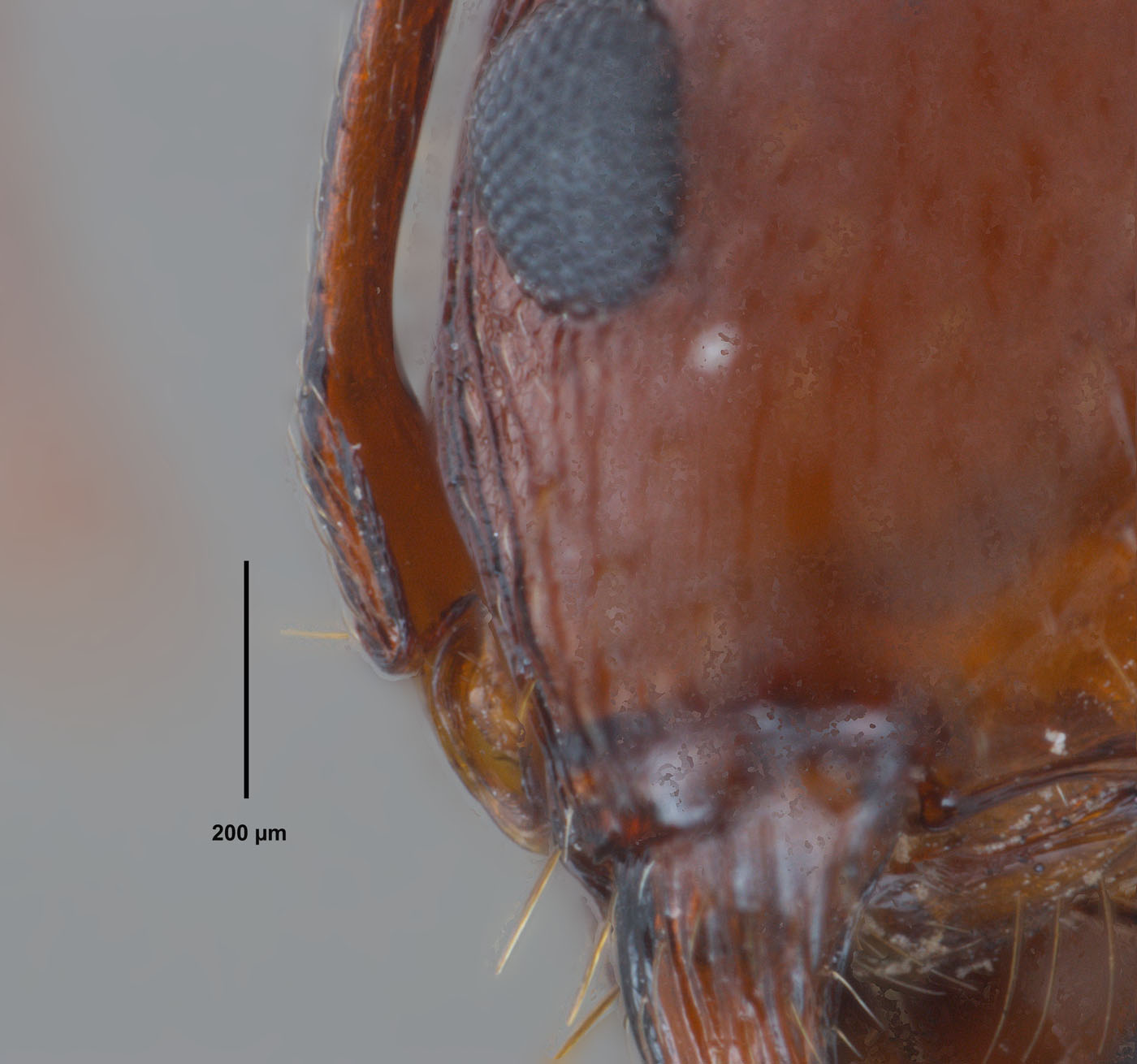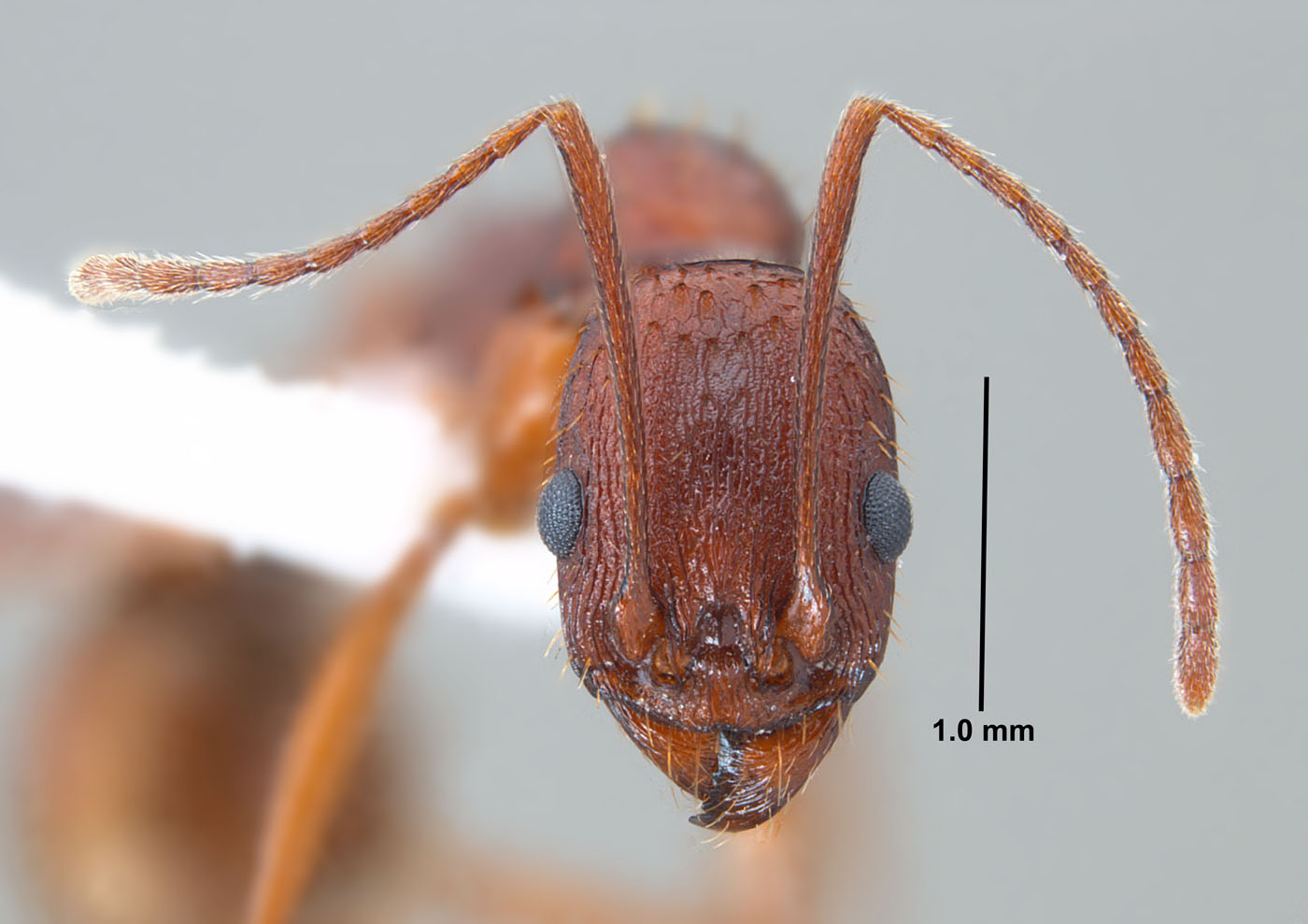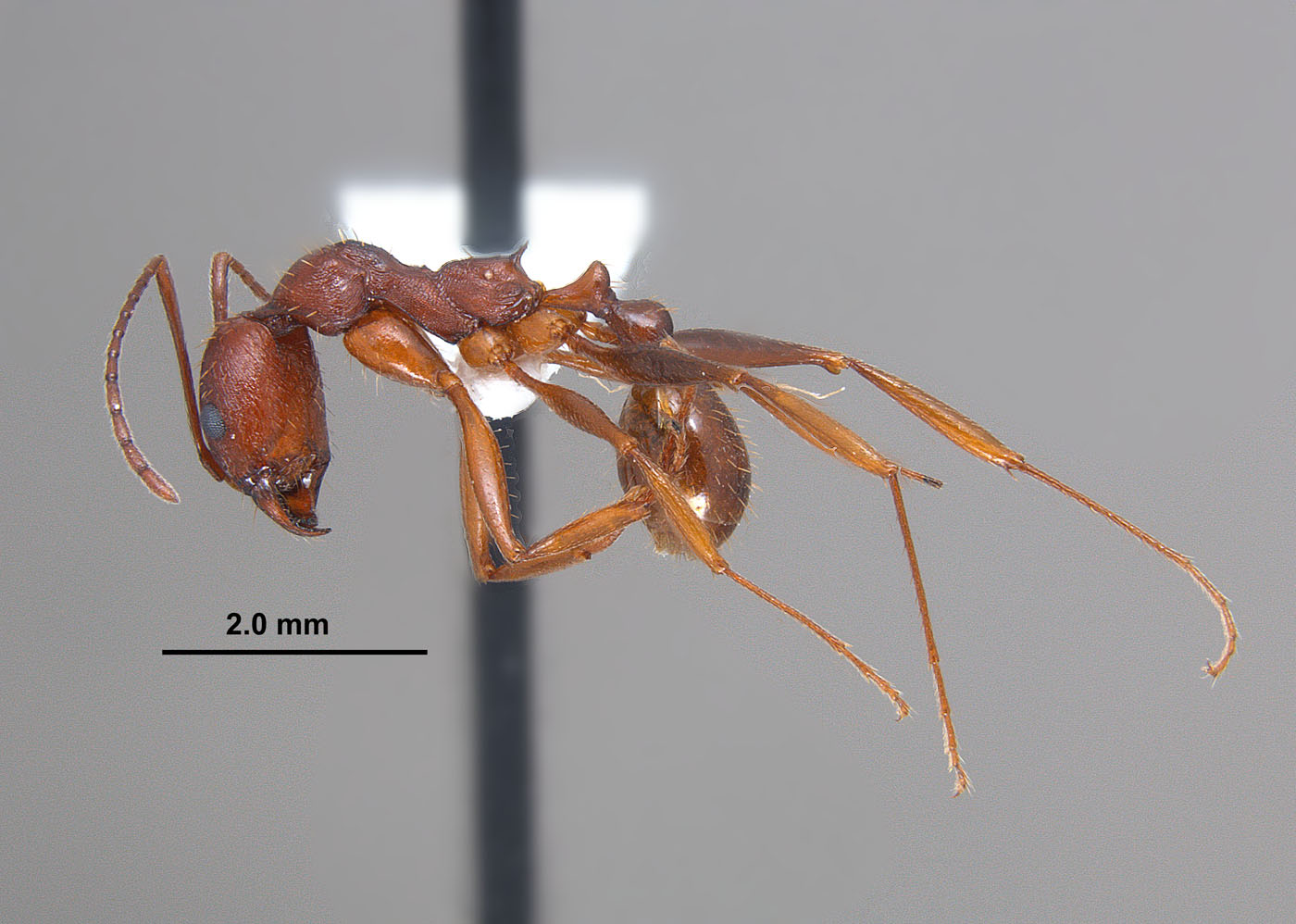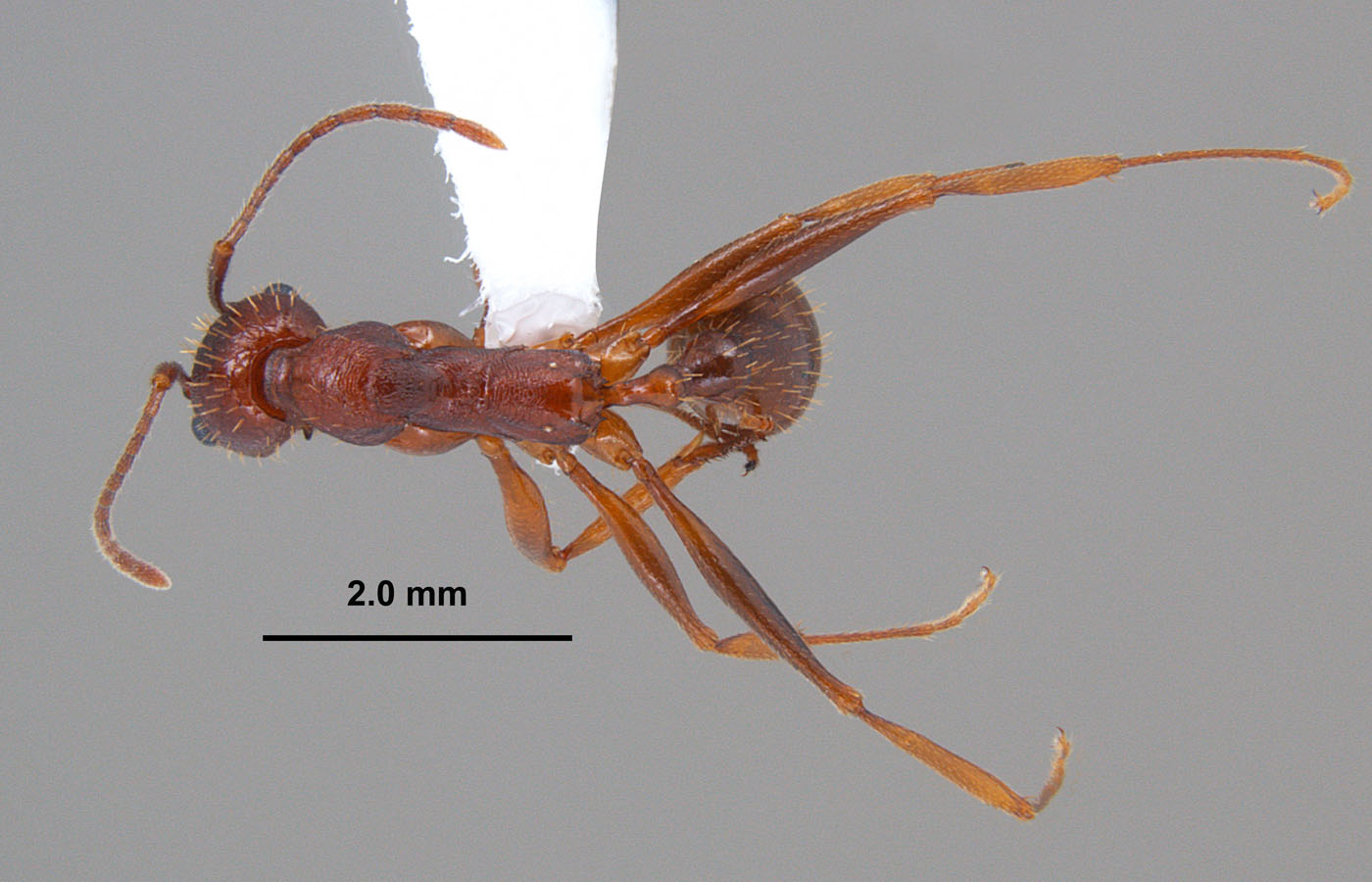Subfamily MYRMICINAE Author: Joe A. MacGown |
||
 Aphaenogaster ashmeadi (Emery), full face view of worker. (GA, Emanuel Co.)This species, as does A. treatae, has a lobe at the base of the scape; however, the lobe is shorter in A. ashmeadi than in A. treatae (click image to enlarge). |
||
Introduction Identification Biology and Economic Importance Although this species has the potential to sting, it is unlikely to pose any serious threat due to its non-aggressive behavior. Due to its relative scarcity, is unlikely to be a nuisance pest in urban areas; however, it is possible that occasional foragers could make their way into homes. Distribution Literature Cited Dash, S. T. 2005. Species Diversity and biogeography of Ants (Hymenoptera: Formicidae) in Louisianan, with Notes on their Ecology. M.S. Thesis, Louisiana State University, 290 pp. Smith, D. R. 1979. In Catalog of Hymenoptera in America north of Mexico. Smithsonian Institution Press, Washington D. C. Vol. 2, pp. 1323-1427. Van Pelt, A. F. 1958. The ecology of the ants of Welaka Reserve Florida (Hymenoptera: Formicidae)Part II: annotated list. The American Midland Naturalist 59: 1-60. |
||





